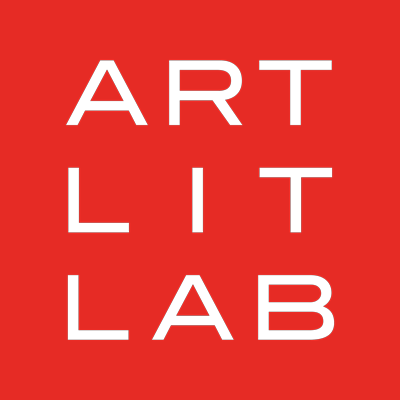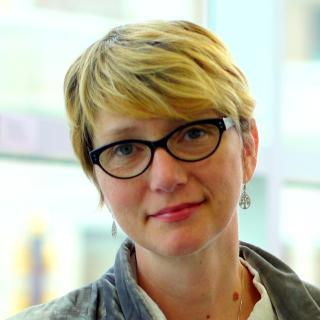A Karen & Michael Braziller Book/Persea Books, $15.95
On This Day in Poetry History, weaves together incidents from the lives of major figures from mid-century American poetry, including Elizabeth Bishop, Robert Lowell, Sylvia Plath, Delmore Schwarz, and Anne Sexton with a lyric intensity. Amy Newman is a well-known critic and award-wining poet who teaches at Northern Illinois University. She talks with us about her newest book, which the New York Times Book Review called “dazzling,” and about finding that moment that poetry, and the poet, begins.
Your previous collection was called Dear Editor and was a fictitious series of letter/poems to a literary journal editor. This new collection, On This Day in Poetry History, often addresses American poetry or even particular poets. There is an occasionally explicit appeal to authority that runs throughout both—progressing from a dialogue with a small gatekeeper of literary tastes in Dear Editor to American poetry itself in the new book. Why do you think your work engages this topic, which is usually invisible in poetry?
Both books arose out of a particular interest of mine, which is to discover what makes poetry poetry. What makes a poem a poem? There’s something wandery that gives poetry its characteristic essence, R. P. Blackmur called poetry’s “animating presence.” And we use our minds in a different way when we write poetry, too. But we don’t use the poetry mind when we compose the letter that accompanies the submission to the editor; we prefer to restrain that poetry mind because of its extravagance. One day I thought: what if, when she turns to compose the submission letter, the poet can’t turn off that part of the mind that’s involved in writing poems? In part, my wondering came out of thinking: would I be able to see poetry happening, then, right there in the letter?
When I finished Dear Editor, I had the same question, only more so. What if I read the biographies and the letters, all the materials of a poet; could I find the moment in a person’s life when he or she becomes a poet? What if we could see American poetry coming into being? In the midst of reading these materials, in part as prep for a class I was teaching, in part just out of interest, I came across a minor detail in an Elizabeth Bishop biography: as a child, after a major fire in her town, she picks up a stocking, diverted by it. This reminded me of her sandpiper in that famous poem, interested in the tiny beauty of the sand grains adjacent to (and diverting from) the chaos of the sea, a very Bishop-esque bit of business. I’m not saying there is a direct correlation, by any means, but I was beginning to think: there is no detail of a life so trivial as to not have later, perhaps profound, effect.
And some details are not at all trivial, either. In another poem I write about a moment in Bishop’s life, when she is barely 2, and her mother, having returned from an institution (she’s been there since her husband died when Elizabeth was 8 months old). Bishop’s mother, who has been wearing mourning black since the death of her husband, is trying on her first colorful dress, and when she sees herself in the dress, she screams. Bishop’s short story “In the Village” begins and ends with an invisible but ever-present scream, which “hangs over that Nova Scotian village,” while the child in that story wanders, observing details of her little village, delighted by various things, and really trying to distract herself into life. One can see in Bishop’s work reluctance toward the style her peers such as Robert Lowell employed, commonly referred to as “confessional” poems. Of the poems that explore and reveal details of personal lives, Bishop said "You wish they'd keep some of these things to themselves.” Her desire to observe, to delight in the micro, to focus here instead of there is in part, in poems, a deliberate attempt to not let the raw material of life emerge so completely that they overwhelm. In such cases, Bishop’s work is compelling perhaps because of that diversion, its charm, like reticence, like something beautiful. Her manner, a non-pareil polite intensity, is like a close-up of a unique little insect, yards from the heat waves of a burning town. Never replicated, this aspect individualizes Bishop’s work. It is absolutely lovely; it is also a survival mechanism.
I like this question about why I make a kind of explicit appeal to an authority in both books. I hadn’t thought of it like that, but of course you’re right: I address an invisible, all-powerful editor in Dear Editor, and I address American poetry in On This Day in Poetry History, trying to get an answer out of …out of Poetry. And just thinking about it, in response to your question, I realize something. I’d been envisioning American poetry in the book in the distant sky, appearing—in the same way the faces of the magi in Yeats’ “The Magi” appear, “the pale unsatisfied ones” whose hunger for being enthralled is responsible for all earthly cycles of tragedy—as a kind of perturbed, restless god, an overseer, hoping to see, in the suffering below, something to finally satisfy.
How did you choose which poets and which time period in American poetry to focus on in the book? Why did the lives of these poets resonate with you so much?
The time in which these writers lived, especially the time they were finding their strengths as poets, is a fascinating time to me. For one thing, the fifties were a watershed moment for psychoanalysis. This idea that our psychological problems are rooted in the unconscious would have been, for newer poets of the time, a marvelous way to finally challenge Eliot’s shadow over poetry, from the theory of impersonal poetry to the New Critical approach.
To oversimplify, Eliot’s theory contributed to the idea that the poet’s life was not a fit tool for reading a poet’s poetry: “Poetry is not a turning loose of emotion, but an escape from emotion; it is not the expression of personality, but an escape from personality.” Critics appreciated this concept (which collaterally removes the author’s intent) because to read the work as a sterile object allows for differing readings, and we had a New Criticism that looked for, say, tension and release of tension in a poem. I’ve always felt that this theory of Eliot’s was really a dissembling on his part. It’s impossible to keep the writer out of the work. Just one look at “The Waste Land” or “The Love Song of J. Alfred Prufrock” in conjunction with any of Eliot’s biographies knocks that pose down a bit. One way or another, the writer is a filter, always.
So you have someone like Robert Lowell, still a nascent writer, who felt imprisoned by the work he was doing in this formalist vein of his predecessors, realizing the restrictive style “seemed distant, symbol-ridden and willfully difficult.” While Lowell is institutionalized for one of his (as he called them) “pathological enthusiasms,” his therapist suggests Lowell write a memoir of his childhood. This essay, about his perception of his mother’s overbearing nature and his father’s weaknesses will become “91 Revere Street,” the second section of his breakthrough —and highly autobiographical—book Life Studies.
And if you couple Freudian psychoanalysis with the concurrent exploration of psychopharmacology, you really do have an interesting moment in poetry history. Many of the writers were exploring therapy for the dream of well-being, “the dream of wholeness,” as Dan Wakefield writes. Therapists were prescribing novel drug therapies for controlling agitation and unhappiness; there was a feeling we might medicate our way to wellness. As Elizabeth Pollet puts it, no one really took into account the effect of mixing these drugs, in daily cycles, with alcohol, and several of these writers experienced, therefore, varying cycles of happiness and unhappiness, of trauma exploration, terror, exuberance and despair. Delmore Schwartz refers to the amphetamines and sleeping pills he measured out each day as “my narcissistic supplies.” This group of writers was afflicted, as all humans are, and their afflictions fractured them often, and yet these afflictions also resulted in some of the most compelling poetry of the century.
Poems about Elizabeth Bishop bookend this collection, beginning when Bishop is eight months old and ending roughly two years before she dies. Why Bishop? And why the use of these moments in Bishop’s life to mark the boundaries of the book?
Elizabeth Bishop was something of a surprise for me. I loved her work in advance of the project, but there was something about her—about all of them, but certainly Bishop’s strength and individualism, her resolution, in light of the time—that resonated. I didn’t know when I started that she would bookend the manuscript; in fact, I hadn’t yet determined how I was going to put the manuscript together. I thought about arranging the work in sections devoted to each poet. I also considered sections devoted to an ostensible subject, like happiness, unhappiness, travel, stasis, that kind of thing.
And at the same time, while I was writing, I was just writing poems in response to moments I would choose from their biographies, and although many had compelling moments in their childhoods, I did end up writing about Bishop’s early years, and not much about the other poets’ childhoods.
When I determined an order for the poems, I ultimately decided that chronological worked best. So when I then arranged the poems chronologically, there she was, with her childhood, which had been so compelling to me. Then, as the other poets begin to fail and fall away, Bishop, who quite by nature was more discreet about her suffering, remains. And this seemed right to me, a bit like her work as well, which gained in popularity through time, its value clarified more thoroughly as the decades went by. There was some kind of sweet justice at the idea of her still around, that vision of hers still absorbing the world and filtering it through her unique, forthright and tender mercies.
You include wonderfully detailed notes and an extensive bibliography at the end of the book. Why did you choose to do this? And were you ever worried about the book becoming too “academic”?
During the writing of the poems, I wanted to try to create a hybrid form: biography in the form of poetry, kind of a poetry/biography genre. I didn’t get far with a name: “poe-ography”? “Bioetry”? “Poetryography”? But a good biography has documentation: notes and bibliography, to validate the facts. Some of the events in the book—John Berryman on a Roller Coaster, Anne Sexton selling cosmetics door to door, Robert Lowell jumping from a moving taxicab to avoid paying the fare—they sound imagined, made-up, practically cartoonish vignettes of these apotheosized representative of poetry history. But even though when we read them they sometimes feel mythic, these writers weren’t myths. They were simply human, and understanding them as mere humans makes the poetry even more incredible to me. It can be galvanizing to think that all of us who wish to write, my students, for example, or anyone who is living a life that is merely and fully life, has the potential to create equally stunning work. The documentation helps answer the question of whether these events are accurate. People have asked me how much of this book is made up. Certainly I am imagining, based on what I know, how a poet might have been feeling at one time or another. But every title is absolutely true.

